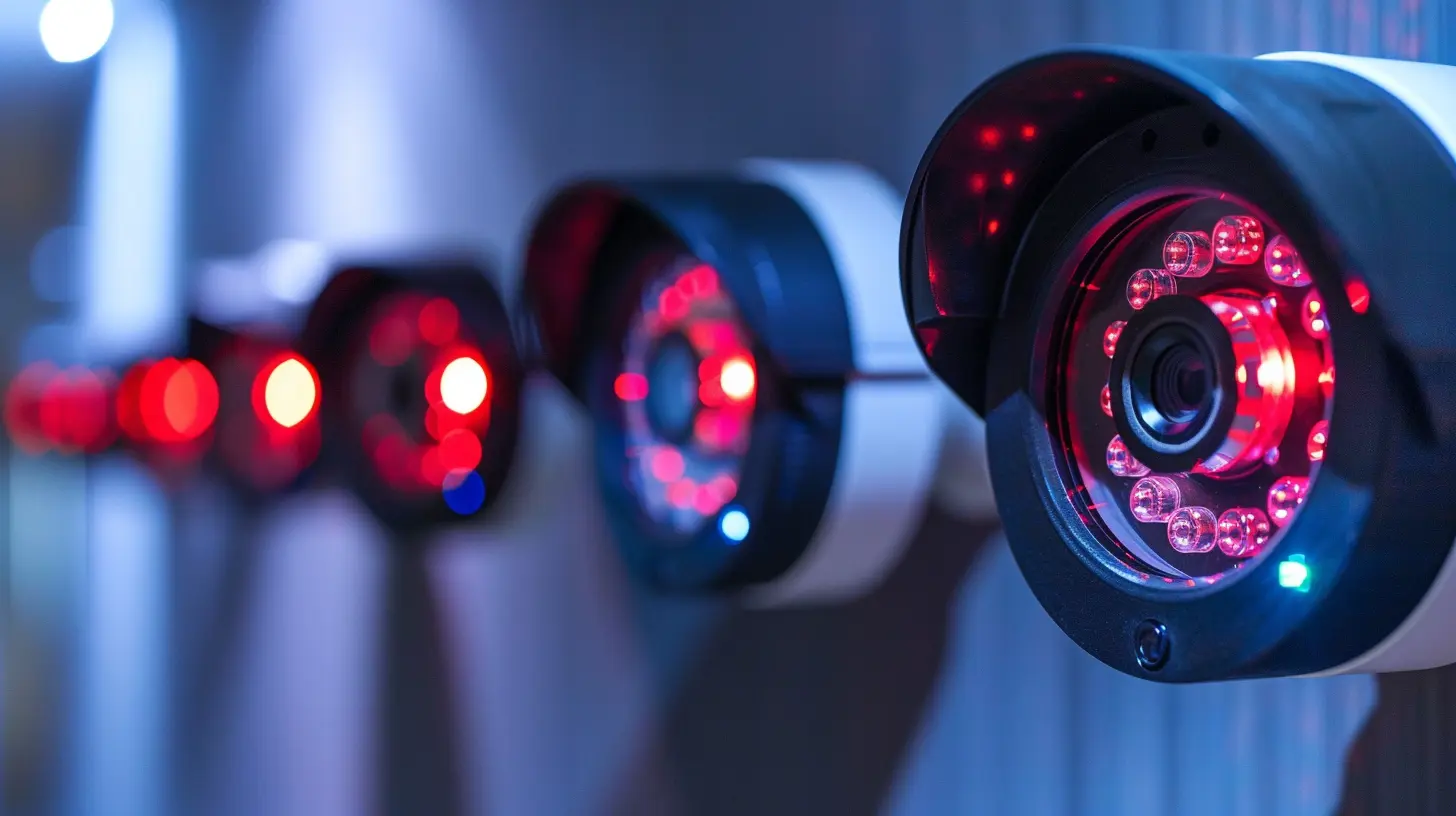The Importance of Cybersecurity in Home Automation
1 July 2025
Welcome to the future—where your coffee brews itself at 7 a.m., your thermostat senses you’re cold before you even do, and your fridge knows you’re out of milk before you open the door. Sounds like something from a sci-fi movie, right? Nope, that’s just your regular smart home doing its thing. But hold on—before you sit back and let your house handle it all, let’s talk about something that often gets pushed to the back burner: cybersecurity in home automation.
Now don’t worry—we’re not diving into overly complex tech jargon here. We’re keeping it real, relatable, and downright helpful. So grab a snack, settle in, and let’s get into why keeping your home automation systems secure is not just important—it’s absolutely essential.
What Is Home Automation, Really?
Let’s start with the basics. Home automation is essentially the use of smart devices and systems to control elements of your home—think lighting, heating, security cameras, appliances, and even your front door—often remotely via apps or voice assistants like Alexa or Google Assistant.From asking your smart speaker to dim the lights for movie night to checking who’s at the door while you’re miles away, we’re all loving the convenience. But here’s the kicker: every smart device you add to your home is like another window into your digital world. And without proper security? That window might just be wide open for hackers.
Why Should You Care About Cybersecurity in Home Automation?
Okay, you might be thinking, “But I just use my smart plug to turn on my coffee machine.” Fair enough. But every connected device, no matter how trivial it seems, is a potential entry point for cybercriminals.Still not convinced? Let’s break it down.
Your Privacy Is at Stake
Imagine someone eavesdropping on your private conversations, watching your security camera feeds, or tracking your daily routine. Creepy, right? And it’s not science fiction—these things have happened.Smart devices often collect a ton of data—what time you get home, which rooms you spend time in, your energy usage, and even your voice commands. If that data falls into the wrong hands, it can be used against you in ways you probably haven’t even thought of.
Your Entire Network Can Be Compromised
Here’s a scary thought—hackers don’t always target the obvious stuff like your router or your laptop. Sometimes, they go through the “back door,” like your smart lightbulbs or connected toaster (yes, that’s a thing).Why? Because many of these IoT (Internet of Things) devices are manufactured with convenience in mind, not security. Once inside one device, hackers can use it as a launchpad to access everything else on your network, including sensitive personal or financial info.
The Risk of Physical Intrusion
It’s not just digital data that’s at risk. Poor cybersecurity in home automation can lead to actual break-ins. Consider this: a hacker disables your smart security camera or unlocks your front door remotely. That’s not just a breach of privacy—that’s a potential home invasion.See where we’re going with this? It’s no longer just about protecting your emails and passwords. It’s about safeguarding your home, your peace of mind, and your personal safety.
Common Cybersecurity Threats in Smart Homes
Let’s dig into what kinds of cyber threats you might actually face when it comes to home automation.1. Weak Passwords
Believe it or not, “123456” and “admin” are still among the most used passwords. C’mon people, we can do better! Weak, default, or reused passwords are low-hanging fruit for hackers.2. Unsecured Devices
A lot of manufacturers rush smart devices to market without proper security features. That cheap smart plug you grabbed on sale? It might not have any encryption or update support, making it a sitting duck.3. Outdated Firmware
Devices that don’t get regular software updates are basically living in the past—and not in a nostalgic way. Outdated firmware can include known vulnerabilities that hackers love to exploit.4. Man-in-the-Middle Attacks
These occur when a third party intercepts communication between your smart device and the cloud server. If your system isn’t encrypted, it’s like sending a postcard—anyone can read it.5. Botnet Attacks
Remember the Mirai botnet? It turned thousands of smart home devices into an army of zombie bots, launching massive DDoS attacks. Yep, your smart fridge could be part of a cyber army if it’s not secure.
Best Practices to Secure Your Smart Home
Alright, it’s not all doom and gloom. The good news? You don’t need a PhD in cybersecurity to protect your smart home. Here’s what you can (and should) do:1. Change Default Settings
First thing’s first: change the default usernames and passwords on all your devices. Be creative, and use strong, unique passwords. Bonus points for using a password manager.2. Use Two-Factor Authentication (2FA)
Think of 2FA as adding a second lock to your digital doors. Even if someone gets your password, they’ll need the second “key”—like a code sent to your phone—to get in.3. Update Regularly
Keep your devices and apps up to date. Regular security patches fix known bugs. If your device doesn’t offer updates? Might be time to consider an upgrade.4. Secure Your Wi-Fi Network
Don’t let your home network be the weak link. Use a strong Wi-Fi password, enable WPA3 encryption if available, and consider setting up a separate network just for your smart devices.5. Disable Unused Features
Not using remote access or a specific app function? Turn it off. The fewer entry points, the better.6. Monitor Device Behavior
Notice your smart camera turning on by itself or your thermostat acting weird? Don’t ignore it—these could be signs of a breach.The Role of AI and Machine Learning in Smart Home Security
Here’s where it gets even cooler (and safer). AI is starting to play a huge role in cybersecurity. Think of it as your digital watchdog—learning your habits, identifying unusual activity, and stopping threats in real-time.Imagine your home system recognizing that your thermostat is trying to connect to a server in a foreign country at 3 a.m. Red flag? You bet. AI can help shut that down before it becomes a problem.
But remember, AI is only as good as the data it learns from and the systems it's built into. So make sure your smart devices are from trusted brands that prioritize both functionality and security.
Future Trends: Where Is Smart Home Cybersecurity Headed?
Smart homes are only going to get smarter. We're talking about everything from smart beds that adjust to your sleeping position to AI-powered cameras with facial recognition. But with great tech comes greater responsibility.Here’s what the future likely holds for home automation security:
- Blockchain Integration: Adding decentralized protection layers to smart systems.
- Self-healing Networks: Automatically identifying and fixing vulnerabilities.
- Enhanced Biometric Security: Think iris scanners and voice authentication.
- Government Regulations: Expect tighter laws around IoT device security standards.
Getting ahead of these trends now means you won’t be scrambling to catch up later.
The Human Element: You’re the Gatekeeper
At the end of the day, no amount of tech can replace good digital habits. Installing smart locks won’t help if you give out your codes to everyone. And having the most secure network doesn’t mean much if you never update your devices.It all boils down to this: you are the first and last line of defense when it comes to home automation cybersecurity. The smart home may be automated, but your security mindset shouldn’t be.
Final Thoughts
Look, home automation is amazing. It brings a level of convenience and efficiency that’s honestly thrilling. But just like you wouldn’t leave your front door wide open, you shouldn’t leave your digital doors unattended either.Cybersecurity isn't just a tech problem—it’s a personal responsibility. By taking a few proactive steps, you can enjoy the perks of a connected lifestyle without all the risks.
So go ahead, let your home make your coffee, set the mood lighting, and lock the doors behind you. Just make sure it’s doing all of that... securely.
all images in this post were generated using AI tools
Category:
Home AutomationAuthor:

Ugo Coleman
Discussion
rate this article
2 comments
Jessamine Scott
Absolutely love this! 🛡️ Cybersecurity is essential for home automation. Keeping our smart homes safe not only enhances convenience but also brings peace of mind. Great read!
October 8, 2025 at 11:15 AM

Ugo Coleman
Thank you! I’m glad you enjoyed it. Cybersecurity is indeed crucial for maintaining safe and convenient smart homes!
Fenn McAuley
Home automation offers convenience, but without strong cybersecurity, it can become a gateway for intrusions. Prioritizing security is essential to protect our smart homes from potential threats.
July 9, 2025 at 2:54 AM

Ugo Coleman
Absolutely! Balancing convenience with robust cybersecurity is crucial for safeguarding our smart homes from potential intrusions. Prioritizing security measures is essential for a safe automation experience.


